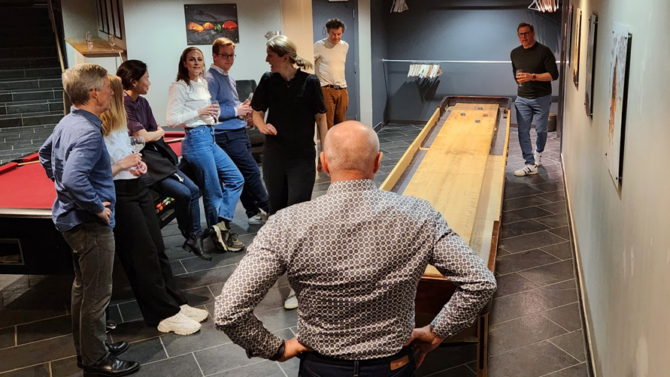Since 2017, the FICEBO group has frequented Skarsnuten, a stunning hotel in Hemsedal, Norway’s premier ski resort. This year marks our fourth attendance at the “Seminar Randomised Trials on the Shoulder,” a renowned research event. Hemsedal serves as a fertile ground for many of our projects.

For more on the Hemsedal Shoulder RCT seminar, refer to our 2019 report, which briefly outlines its history.
This time, we had our largest group yet – eight FICEBO members.
What keeps us returning to Hemsedal? It’s the exceptional presentations on key aspects of upper extremity treatment, along with the invaluable subsequent discussions. Having over 30 world experts engage in methodological debates is a rarity these days – it’s critical appraisal at its finest.
While we may consider providing synopses of each presentation in the future, the abundance of quality content makes it impractical for now.
As for the FICEBO contributions, on Wednesday evening, Tuomas told about the futility of predicting the outcomes of long-lasting tennis elbow in the FINITE pilot cohort. Contrary to the popular belief, surgeons can’t predict who will get better and who will not, and neither does the pessimism nor optimism of the patient predict the outcome. Conclusion being that indication for surgery can’t be that the surgeon or the patient thinks that it won’t get better.
On the second day, Kari presented the 10-year follow-up of the FIMPACT trial, which showed, perhaps unsurprisingly to many, no significant differences among the treatment groups -encompassing arthroscopic subacromial decompression, diagnostic arthroscopy, and exercise therapy – echoing earlier findings. These thorough investigations into methodologically sound RCTs provide us with invaluable insights.
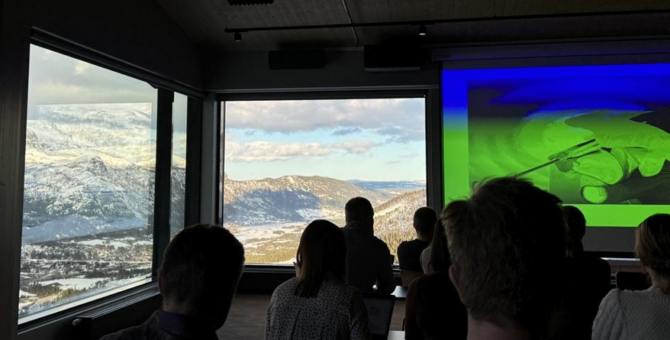
As the session shifted to fractures, Simo captivated the audience with the latest chapter in the ongoing collaboration between FISH and JAMA – the 5-year follow-up of the FISH trial. Notably, patients who underwent secondary surgery (32%) and exhibited inferior results at the 1- and 2-year follow-up can anticipate these disparities fading away by the 5-year mark, resulting in no clinically relevant differences compared to successful conservative or primary surgical treatments. This long-term follow-up offers a crucial knowledge base for shared decision-making between patients and physicians.
Nonetheless, it remains crucial to identify patients at an elevated risk of nonunion as early and accurately as possible. To address this challenge, Cyrill unveiled the RUSHU validation study, which aids in the identification of such patients through a systematic analysis of follow-up x-ray images.
The next day, Thomas presented the SCRUTINY study, a collaboration with esteemed Australian counterparts. Amidst significant variability in prevalence rates, age groups, genders, and outcome definitions, one constant emerged—structural changes prevailed in asymptomatic shoulders. However, bias remains a concern, reaffirming the need to bridge this knowledge gap – which we intend to accomplish with the FIMAGE study. Simo, Saara, and Thomas shared progress on the project, indicating successful data collection and the start of analysis and publication planning.
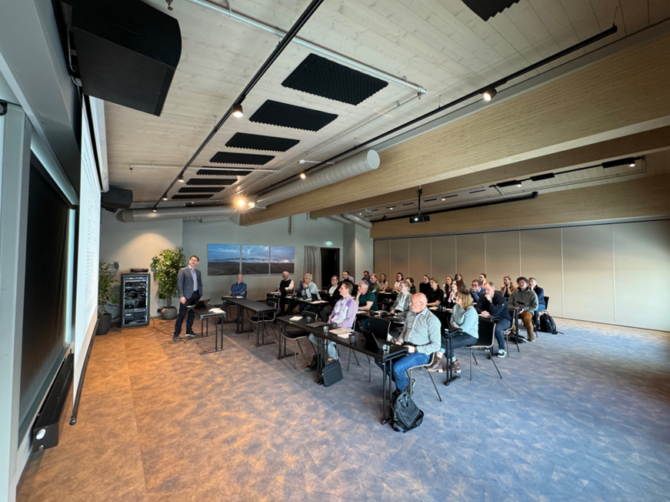
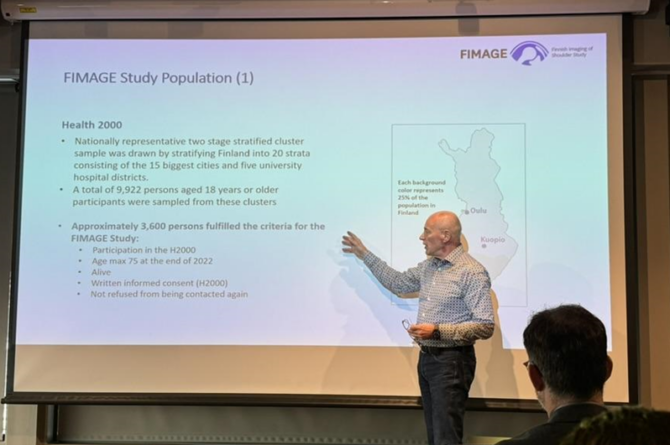
On the concluding day, Kati delivered two presentations. Firstly, she elucidated the primary findings of the DETECT Trial, comparing effectiveness of three treatment modalities in addressing Dupuytren’s disease. The results emphasized the consideration of patient-specific factors in the decision-making process, rather than solely relying on surgeon preference. If you don’t already know this landmark trial, published earlier this year in the Annals of Internal Medicine, use this opportunity to acquaint yourself with the findings.
In her second presentation Kati expanded on how insights gleaned from a pilot study can be, and specifically were used to refine the protocol of an ongoing RCT, the Fintasy Trial, which investigates the efficacy of trapeziectomy in treating painful thumb OA. She emphasized that a well-conducted feasibility pilot has the potential to enhance the likelihood of a successful main trial but necessitates moderate efforts and time to execute properly.
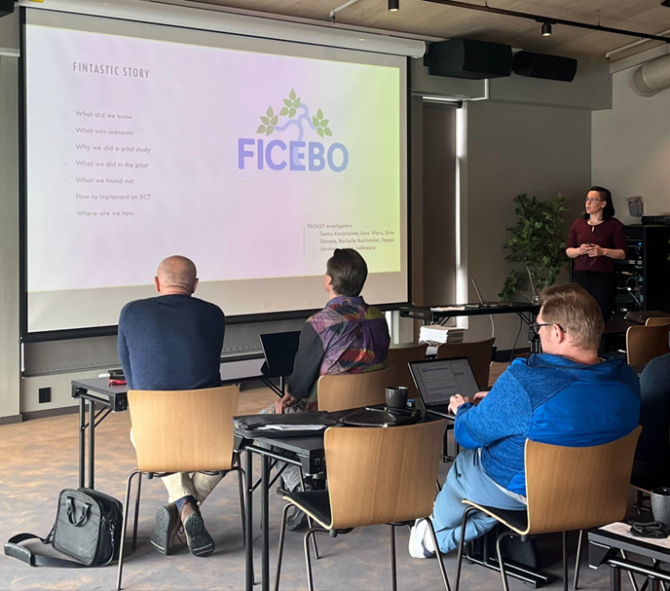
The final item on the program was a discussion with the aim of looking forward – “Where are the evidence gaps, what should we study?” hosted by Tuomas, Danielle van der Windt and professor Andrew Carr over Zoom from Oxford. We looked at ways of identifying the important knowledge gaps and with the intention of provoking thoughts on moving from passion-driven choice of research topics to shortlisting conditions with significant numbers and no evidence and looking if something on the shortilist looks interesting.
One important aspect of the Hemsedal meeting is to get acquainted with other researchers in the field of shoulder research. A traditional shuffleboard game between Norway and Finland serves as one of the best opportunities to discuss various topics in the field in a more relaxed manner. Teams led by Professors Järvinen (FIN) and Brox (NOR) once again battled for the title of the best shuffleboard team in Nordic shoulder research. The visiting team graciously conceded to the home team by one point.
